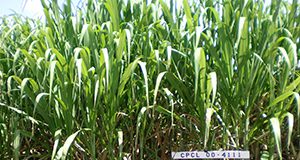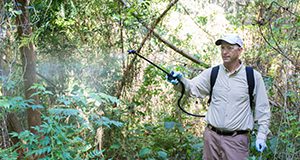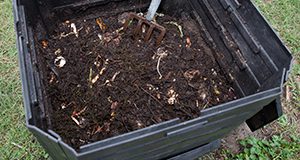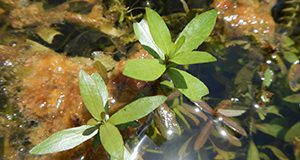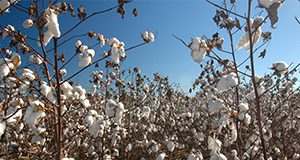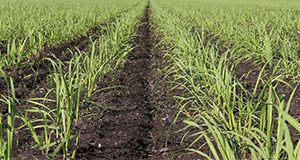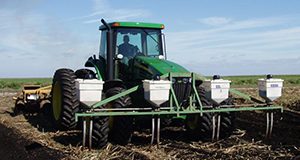 Warm-season grasses are vital to livestock production systems and dominate ground cover in tropical and subtropical areas. The objective of this 7-page publication is to provide basic information about the role of micronutrients in warm-season grass production systems in Florida. Written by Jane C. Griffin, Joao Vendramini, Diane Rowland, and Maria L. Silveira and published by the UF/IFAS Agronomy Department, November 2017.
Warm-season grasses are vital to livestock production systems and dominate ground cover in tropical and subtropical areas. The objective of this 7-page publication is to provide basic information about the role of micronutrients in warm-season grass production systems in Florida. Written by Jane C. Griffin, Joao Vendramini, Diane Rowland, and Maria L. Silveira and published by the UF/IFAS Agronomy Department, November 2017.
http://edis.ifas.ufl.edu/ag419
Tag: Agronomy Department
2016 Evaluation of Foliar Fungicides for Disease Control in Peanut in Jay, FL
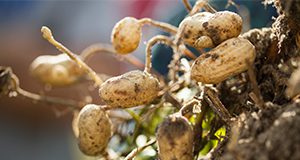 This report includes a summary of the 2016 foliar fungicide programs for control of early and late leaf spot and white mold (southern stem rot) in peanut at Jay, Florida. It shows the effectiveness of 13 fungicide programs for disease control. This 6-page fact sheet discusses fungicide treatments, treatment rates, application timing, 2016 growing conditions, experimental design, and results. Written by Michael Mulvaney, Robert Kemerait, John Atkins, and Nicholas Dufault, and published by the UF Agronomy Department, April 2017.
This report includes a summary of the 2016 foliar fungicide programs for control of early and late leaf spot and white mold (southern stem rot) in peanut at Jay, Florida. It shows the effectiveness of 13 fungicide programs for disease control. This 6-page fact sheet discusses fungicide treatments, treatment rates, application timing, 2016 growing conditions, experimental design, and results. Written by Michael Mulvaney, Robert Kemerait, John Atkins, and Nicholas Dufault, and published by the UF Agronomy Department, April 2017.
http://edis.ifas.ufl.edu/ag415
Sugarcane Cultivars Descriptive Fact Sheet: CPCL 97-2730 and CPCL 00-4111
CPCL 97-2730 and CPCL 00-4111 are emerging sugarcane cultivars in Florida with rapid expansion in last couple of years. Both were ranked among the top 10 sugarcane cultivars in Florida in the 2015 Sugarcane Variety Census (VanWeelden et al. 2016) based on their total acreage. High biomass yield and better rust resistance greatly improve the chances of the cultivars’ adoption by growers. This fact sheet provides basic information and yield and disease information about CPCL 97-2730 and CPCL 00-4111 to assist growers in decision-making related to further expansion of these cultivars. Written by Hardev Sandhu and Wayne Davidson, and published by the UF/IFAS Agronomy Department, May 2017.
http://edis.ifas.ufl.edu/sc103
Worker Protection Standard: Determining Your WPS Responsibilities
In 1992, the US Environmental Protection Agency (EPA) issued a comprehensive regulation called the Worker Protection Standard for Agricultural Pesticides (WPS). The EPA has made several changes to the WPS since it was fully implemented in 1995. This five-page document will address determining responsibilities under the revised WPS. Written by Frederick M. Fishel and published by UF’s Agronomy Department, September 2017.
http://edis.ifas.ufl.edu/ag418
Herbicide Residues in Manure, Compost, or Hay
When purchasing compost, it is important to understand that some manure-based products can contain herbicide residues that can affect the growth of certain plants. Manure from animals that have been fed forage treated with aminopyralid or other closely related herbicides, such as clopyralid or picloram, can be contaminated with these herbicides, which severely restrict the growth of legume and solanaceous crops and other broadleaf plants. This 3-page fact sheet discusses aminopyralid, compost, questions to ask when purchasing bulk compost or mulch, conducting a bioassay, aminopyralid injury symptoms, and steps to consider if contaminated manure or compost has been added to a garden or field site. Written by Jason Ferrell, Peter Dittmar, and Brent Sellers, and published by the UF Agronomy Department, May 2017.
http://edis.ifas.ufl.edu/ag416
Worker Protection Standard: Respirators
On November 2, 2015, the EPA revised the WPS, making significant changes to the rule’s requirements. Most of the revised provisions became effective January 2, 2017; there are four provisions that are delayed until January 2, 2018. This four-page document will address respirator use under the revised WPS. Written by Frederick M. Fishel and published by the Agronomy Department and the Pesticide Information Office.
http://edis.ifas.ufl.edu/pi272
East Indian Hygrophila: Hygrophila polysperma (Roxb.) T. Anderson
East Indian hygrophila is a submersed aquatic weed that has invaded a number of aquatic systems in the southeastern United States. It is a federally listed noxious weed and a Florida Class II prohibited plant. Established populations of East Indian hygrophila interfere with human uses of bodies of water and disrupt ecosystems by forming dense, impenetrable monocultures that clog the water column, restrict water flow, and create poor habitat for aquatic fauna. This 5-page fact sheet provides an overview of the plant and discusses its habitat and control. Written by Lyn A. Gettys and Stephen F. Enloe, and published by the UF Agronomy Department, December 2016.
http://edis.ifas.ufl.edu/ag413
Using Dicamba in Dicamba-Tolerant Crops
After many years in development, dicamba will likely be fully approved for use in tolerant cotton varieties for the 2017 growing season. There is great concern that dicamba drift can result in significant losses in nearby sensitive crops. This concern is well-founded because many crops (such as soybean, snap bean, and peanut) are highly sensitive to extremely low doses of dicamba. All precautions must be followed if these new dicamba formulations are to be used. This 3-page fact sheet discusses herbicide selection, discontinued use of ammonium sulfate, nozzle selection, boom height, and wind speed. It also addresses a few frequently asked questions. Written by J. Ferrell and R. Leon, and published by the UF Agronomy Department, February 2017.
http://edis.ifas.ufl.edu/ag414
Sugarcane Cultivars Descriptive Fact Sheet: CP 96-1252, CP 01-1372, and CP 00-1101
Sugarcane cultivars CP 96-1252, CP 01-1372, and CP 00-1101 are the top three commercial sugarcane cultivars in Florida, occupying more than 43% of total sugarcane area. These cultivars are developed through the cooperative agreement among the United States Department of Agriculture (USDA), Canal Point, the UF/IFAS Everglades Research and Education Center in Belle Glade, and the Florida Sugar Cane League. This 4-page fact sheet provides information on the cultivars, their parentage, flowering, cold tolerance, yields, disease response, and major growth or yield issues. Written by Hardev Sandhu and Wayne Davidson, and published by the UF Agronomy Department, December 2016.
http://edis.ifas.ufl.edu/sc102
Quick Reference Guide to the Worker Protection Standard (WPS) as Revised in 2015
The Worker Protection Standard (WPS) is a regulation originally issued by the US Environmental Protection Agency (EPA) in 1992 and most recently revised in 2015. This eight-page reference guide gives an overview of the 2015 revisions. Written by Frederick M. Fishel, and published by the Agronomy Department.
http://edis.ifas.ufl.edu/pi270
Methods to Evaluate Peanut Maturity for Optimal Seed Quality and Yield
Determining when to dig is one of the most important economic decisions a grower must make. Peanut (Arachis hypogaea L.) poses a unique challenge for maturity determination because it is an indeterminate crop that forms pods underground. This 8-page fact sheet discusses maturity assessment methods as well as steps for collecting and evaluating a maturity sample. Written by Ethan Carter, Patrick Troy, Diane Rowland, Barry Tillman, Keith Wynn, Krystel Pierre, and Michael Mulvaney, and published by the UF Agronomy Department, September 2016.
http://edis.ifas.ufl.edu/ag411
Worker Protection Standard: Information at a Central Location
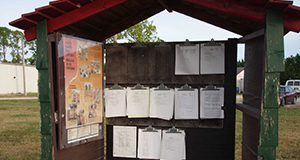
This three-page FAQ fact sheet answers questions about posting information at a central location per the regulations of the Worker Protection Standard (WPS).
Written by Frederick M. Fishel and Tatiana Sanchez and published by the Agronomy Department.
http://edis.ifas.ufl.edu/pi149
2011 South Florida Beef Forage Survey Results
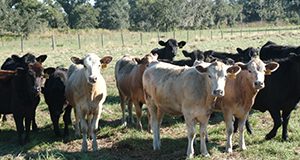 UF/IFAS Extension faculty and state specialists involved in the UF/IFAS South Florida Beef-Forage Program (SFBFP), in conjunction with the UF/IFAS Program Evaluation and Organizational Development unit, created a survey in 1982 that is used to evaluate ranch management practices. The survey is updated and distributed every five years to ranchers in 14 south Florida counties: Charlotte, Collier, DeSoto, Glades, Hardee, Hendry, Highlands, Hillsborough, Lee, Manatee, Martin, Okeechobee, Polk, and Sarasota. There were 102 anonymous responses in 2011. This 6-page fact sheet discusses characteristics of beef operations in south Florida, reproduction, production, marketing, herd health, nutrition, forage production, and environment. Written by Sonja Crawford, Christa Kirby, Tycee Prevatt, Brent Sellers, Maria Silveira, Bridget Stice, Joao Vendramini, and Lindsey Wiggins, and published by the UF Agronomy Department, October 2016.
UF/IFAS Extension faculty and state specialists involved in the UF/IFAS South Florida Beef-Forage Program (SFBFP), in conjunction with the UF/IFAS Program Evaluation and Organizational Development unit, created a survey in 1982 that is used to evaluate ranch management practices. The survey is updated and distributed every five years to ranchers in 14 south Florida counties: Charlotte, Collier, DeSoto, Glades, Hardee, Hendry, Highlands, Hillsborough, Lee, Manatee, Martin, Okeechobee, Polk, and Sarasota. There were 102 anonymous responses in 2011. This 6-page fact sheet discusses characteristics of beef operations in south Florida, reproduction, production, marketing, herd health, nutrition, forage production, and environment. Written by Sonja Crawford, Christa Kirby, Tycee Prevatt, Brent Sellers, Maria Silveira, Bridget Stice, Joao Vendramini, and Lindsey Wiggins, and published by the UF Agronomy Department, October 2016.
http://edis.ifas.ufl.edu/ag410
Worker Protection Standard: Owner and Immediate Family Exemption
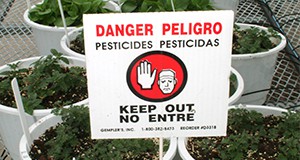
This three-page FAQ fact sheet answers questions about the exemptions for owners and their immediate families in the Worker Protection Standard (WPS).
Written by Frederick M. Fishel and Tatiana Sanchez and published by the Agronomy Department.
http://edis.ifas.ufl.edu/pi264
Biology and Management of Whitehead Broom in Pastures
Whitehead broom, also known as shrubby false buttonweed or southern larraflower, is becoming problematic in south Florida pastures, hayfields, and rights-of-way. This 2-page fact sheet discusses a few options to control this species. Written by Brent Sellers and James McWhorter, and published by the UF Agronomy Department, August 2016.
http://edis.ifas.ufl.edu/ag409
Sequential Sampling for Wireworms (Coleoptera: Elateridae) at Sugarcane Planting
In the Everglades Agricultural Area of Florida, where sugarcane is planted on around 410,000 acres annually, wireworms are the most economically important insect pests of newly planted sugarcane. This 3-page fact sheet written by Matthew T. VanWeelden and Ron Cherry and published by the Department of Entomology and Nematology provides a step-by-step plan to determine whether an application of soil insecticide may be needed to control wireworms. This publication is also a part of the Florida Sugarcane Handbook, an electronic publication of the Agronomy Department.
http://edis.ifas.ufl.edu/in1143
Herbicides to Kill Invasive Trees in Home Landscapes and Surrounding Natural Areas
Several plant species that are invasive in natural areas of public lands also occur on private property. Invasive plants on private property that thrive within both landscaped and surrounding natural areas can serve as a source of infestation to other natural areas. Therefore, property owners are encouraged to remove invasive plant species from both areas. This 5-page fact sheet is a major revision that discusses different herbicides, hand-pulling, stump grinding, foliar herbicide application, cut stump herbicide application, basal bark herbicide application, hack-and-squirt, frill, or girdle herbicide application, licenses and training, and control of specific invasive plants. Written by K. A. Langeland and S. F. Enloe, and published by the UF Department of Agronomy, revised May 2016.
http://edis.ifas.ufl.edu/ag259
Cressleaf Groundsel (Butterweed) Identification and Management in Pastures
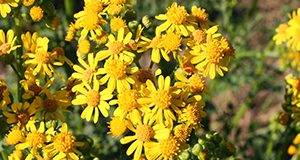 Butterweed is a winter annual that is toxic to both cattle and horses. This 2-page fact sheet provides an overview of the plant as well as herbicide recommendations. Written by Brent Sellers and Jay Ferrell, and published by the UF Agronomy Department, May 2016.
Butterweed is a winter annual that is toxic to both cattle and horses. This 2-page fact sheet provides an overview of the plant as well as herbicide recommendations. Written by Brent Sellers and Jay Ferrell, and published by the UF Agronomy Department, May 2016.
http://edis.ifas.ufl.edu/ag406
Carinata, the Jet Fuel Cover Crop: 2016 Production Recommendations for the Southeastern United States
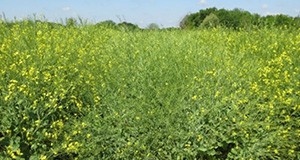
Carinata has been grown commercially for several years on the Canadian prairie and more recently in the US northern plains as a summer crop. For the past four years, UF has been conducting research to evaluate various management practices that allow incorporation of carinata into current cropping systems as a winter crop with minimal modification to existing infrastructure in the southeastern US. This 8-page fact sheet is a major revision that discusses carinata characteristics, biology, nutrient management, tillage, variety selection, planting dates, seeding depth, seeding rate, row spacing, weed management, disease management, insect management, harvest management, economics, and crop insurance. Written by Ramdeo Seepaul, Christine M. Bliss, David L. Wright, Jim J. Marois, Ramon G. Leon, Nicholas Dufault, Sheeja George, and Steve M. Olson, and published by the UF Agronomy Department, December 2014. Revised October 2015.
http://edis.ifas.ufl.edu/ag389
Guide to Olive Tree Nutrition in Florida
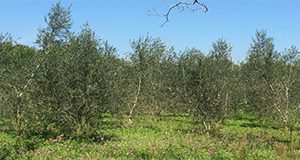 A burgeoning olive industry already exists in the southeastern United States, but research and Extension information regarding olive fertilization recommendations in Florida is limited. While there are data and recommendations for olive from the University of California, the University of Georgia (UGA), and other institutions around the world, there are no data from which we can derive Florida-specific recommendations. This 6-page fact sheet uses many of the existing recommendations for mature, high-density, and traditional grove spacing as guidelines until data specific to Florida production are generated. It discusses leaf tissue sampling procedures, leaf tissue sufficiency ranges, nitrogen fertility, phosphorus and potassium fertility, boron, concerns for olive production in Florida, and other resources for olive production in the state. Written by Michael J. Mulvaney, Rao Mylavarapu, Peter C. Andersen, Mack Thetford, and Jennifer L. Gillett-Kaufman, and published by the UF Agronomy Department, May 2016.
A burgeoning olive industry already exists in the southeastern United States, but research and Extension information regarding olive fertilization recommendations in Florida is limited. While there are data and recommendations for olive from the University of California, the University of Georgia (UGA), and other institutions around the world, there are no data from which we can derive Florida-specific recommendations. This 6-page fact sheet uses many of the existing recommendations for mature, high-density, and traditional grove spacing as guidelines until data specific to Florida production are generated. It discusses leaf tissue sampling procedures, leaf tissue sufficiency ranges, nitrogen fertility, phosphorus and potassium fertility, boron, concerns for olive production in Florida, and other resources for olive production in the state. Written by Michael J. Mulvaney, Rao Mylavarapu, Peter C. Andersen, Mack Thetford, and Jennifer L. Gillett-Kaufman, and published by the UF Agronomy Department, May 2016.
http://edis.ifas.ufl.edu/ag405
